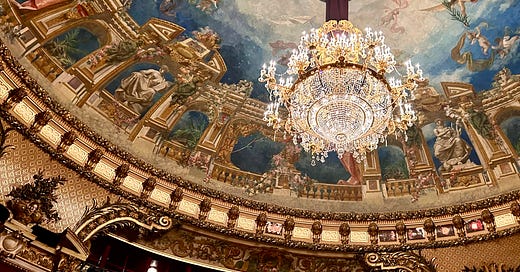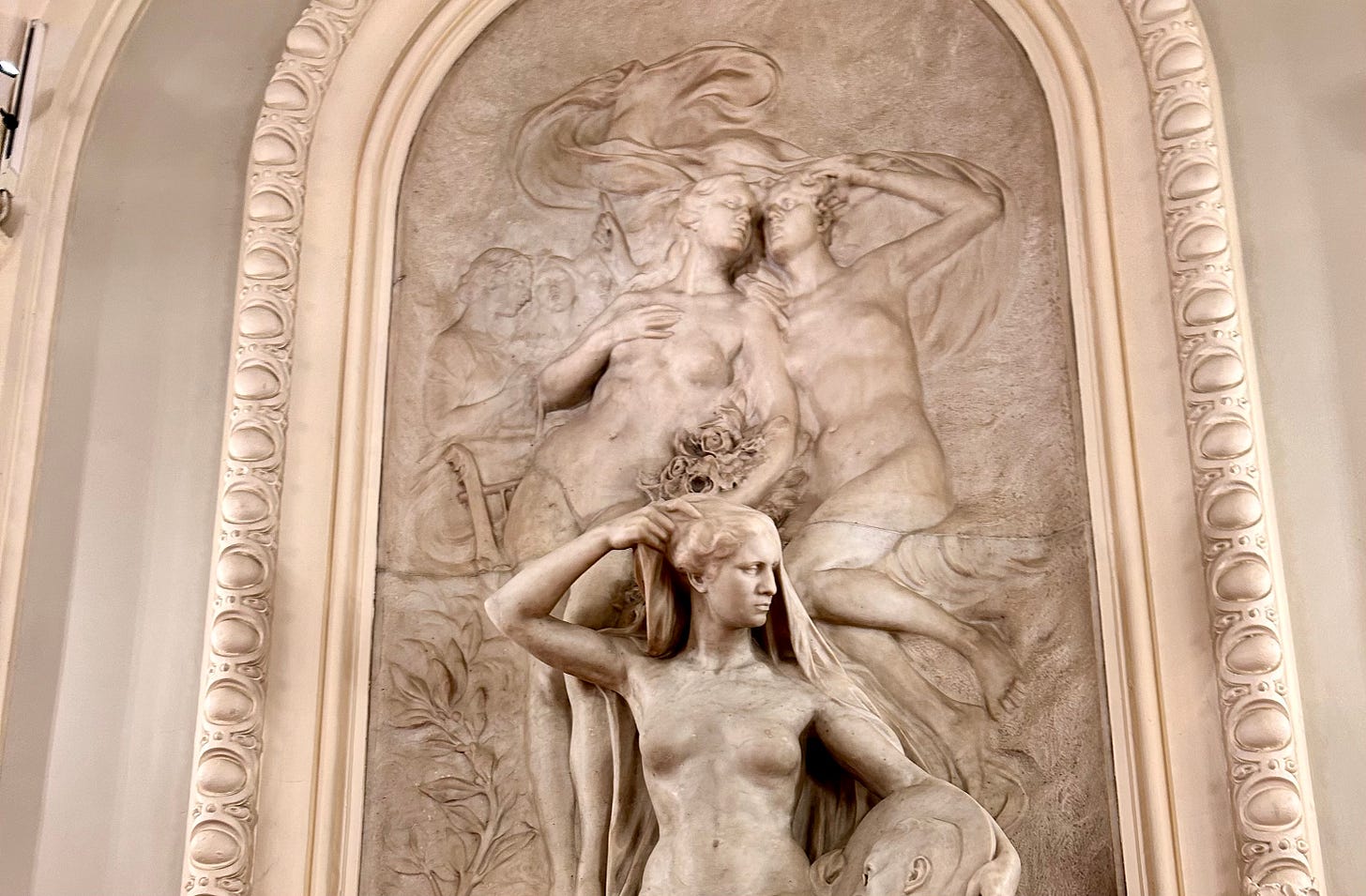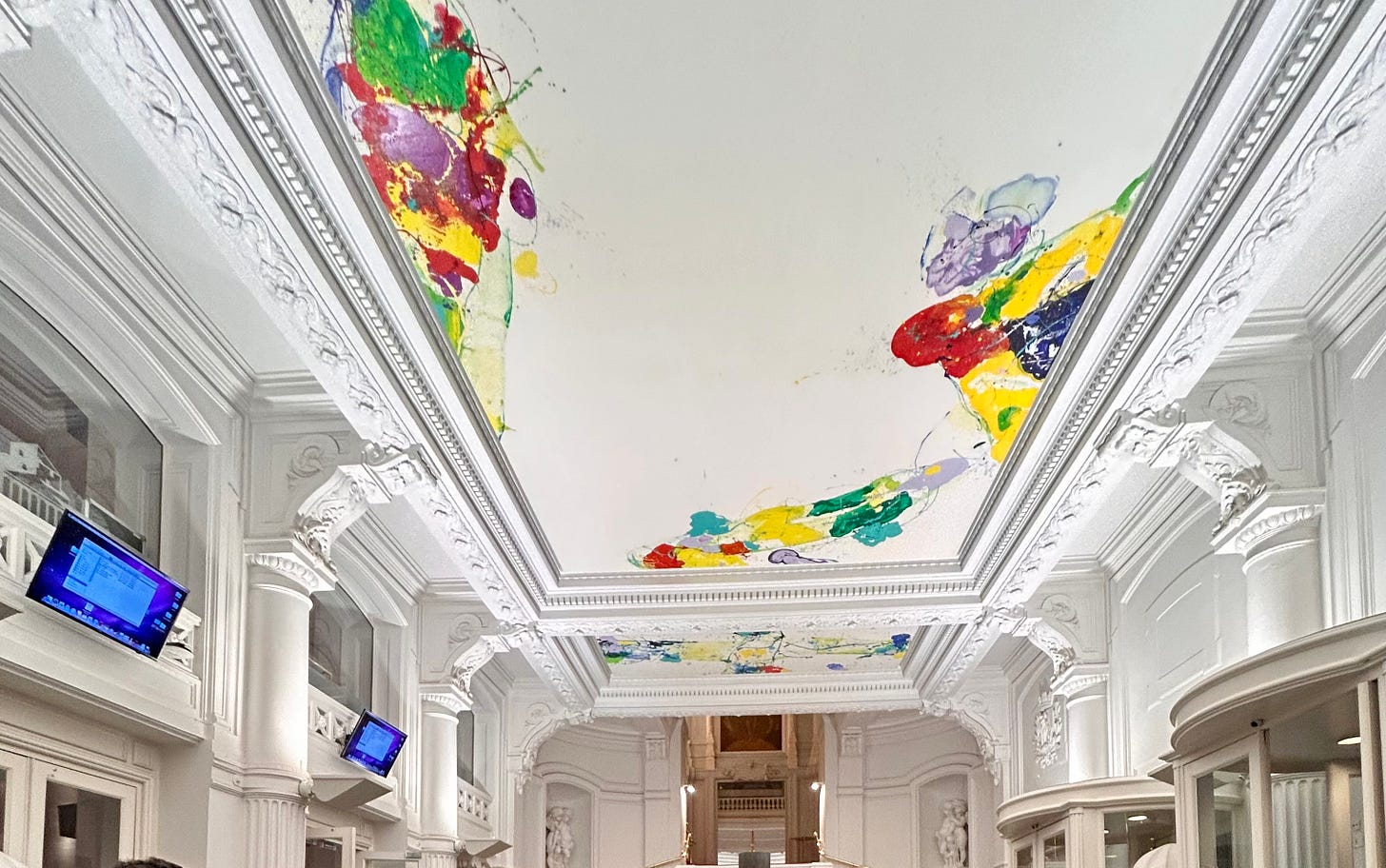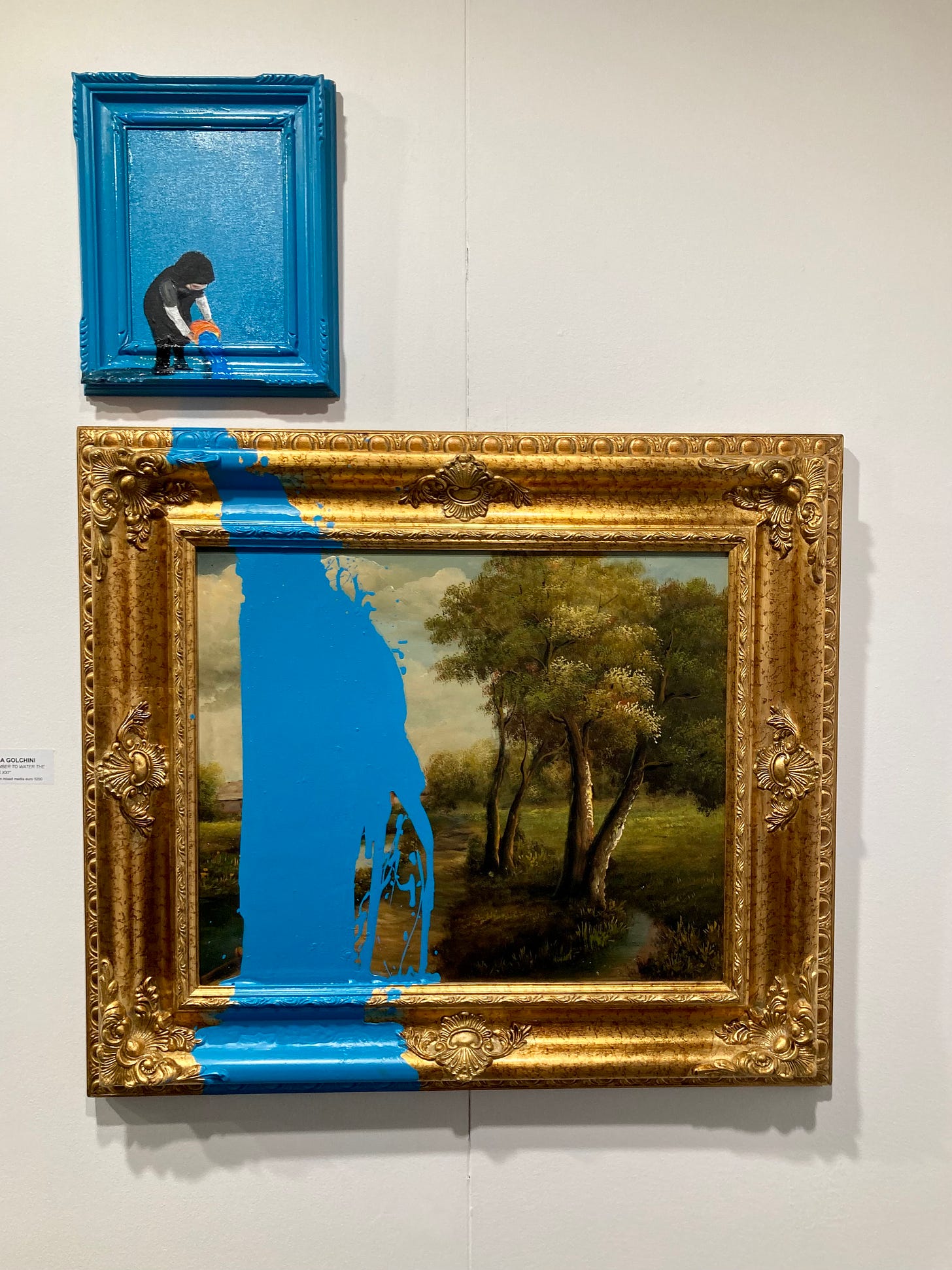Did an opera spark the Belgian Revolution?
No napping was involved in the making of this issue about Brussels' opera house, La Monnaie.
In this issue:
A short history of Brussels’ opera house, La Monnaie
A rundown of which operas you can see this Fall, in Brussels and beyond
Some art you can see this weekend or the following weeks.
Estimated reading time: 5 minutes.
Did an opera lead to the Belgian Revolution?
Sort of.
If the official website of Brussels’ opera house La Monnaie is to be believed, one show in particular “played an important part in Belgium’s struggle for independence.”
In 1830, the website explains, “King William of the Spanish Netherlands lifted the prohibition on the staging of Auber’s opera The Mute of Portici.”
The opera is all about patriotism and freedom. The storyline follows the marriage of a Spanish viceroy and a princess, and focuses on a revolt against the Spanish occupation. It seems to have provided the perfect spark to lit this revolutionary fire, as riots against the Dutch broke out during the performance. Not even after! During!
La Monnaie is a Brussels staple. Its history, architecture and programming are all fascinating.
Short history of the opera house
In 1800, Napoleon decided to build a new theatre in Brussels. La Monnaie was inaugurated 20 years later.
Baroque art and architecture was all the rage at the time, so it’s no surprise that the opera building is — at least on the inside — ornate and elegant, dark and voluminous, imposing and grandiose.
But while the grande salle and foyer are perfect Baroque examples, the exterior and main hallway tell a neo-classical story (clear lines, light colors, inspired by ancient Roman architecture).
And as a bonus plot twist, the building’s entrance hallway underwent a makeover in the 80s, courtesy of a Belgian architect who called on not one but two contemporary American artists to help him revamp it: Sol Lewitt designed black and white tiles for the floor, making the shape of a fan, while Sam Francis painted a colorful abstract image on the ceiling. You can see a better picture here.
A baroque masterpiece with neo-classical accents and an extremely contemporary entrance — this building is a lesson in subverting tradition.
What’s on?
The new season kicked off earlier this month with the third part of Richard Wagner’s masterpiece, ‘The Ring of the Nibelung.’ (The plot is so intricate and complex, I won’t attempt to summarize it.)
This work was deemed revolutionary when it came out in the late 19th century, changing the way operas were written and staged. Wagner put both the music and text in the service of the drama, rather than the other way around.
Which means a German is considered to have revolutionized Opera. I wonder how the Italians feel about this.
‘Siegfried’ plays until early October and has been pretty much sold out for a while now. But you didn’t want to see this one anyway, Siegfried does a lot of soul searching and whining. Plus, it lasts a whopping 4 hours — it practically begs you to nap during the third act.
What you want to do instead is go see the 4th and final part, in early 2025. ‘Gotterdammerung’ concludes the epic drama in an intense, apocalyptic way.
But … that one lasts 5 hours and a half.
So what you really want to do instead is wait until June 2025, when La Monnaie will be staging Bizet’s Carmen — a brilliant, lively opera of appropriate length.
If you don’t want to wait until then, however, you can see a very new work in October.
“The Time of Our Singing” first premiered in 2021, and follows the story of “a mixed family both united and divided by music in the turbulence of post-war America.” It will play at La Monnaie a few times, between October 24th and November 2nd.
Elsewhere in Belgium…
Madama Butterfly, one of Italian composer Giacomo Puccini’s most famous works, will be performed in Antwerp and Ghent on various dates throughout the Fall, in honor of the 100th anniversary of Puccini’s death. He died in Brussels. (Editor’s note: Did you know this? I didn’t!)
The story follows a Japanese geisha who marries an American naval officer. He abandons her, leaving her pregnant and heartbroken and ready to sing her heart out.
Marking the same occasion, the Liege opera is putting on something called the “Pucciniana” — described as “a cantata in honor of the maestro” — in November.
You’d think amid all this celebration someone would’ve put on La Boheme as well, but no. My favorite Puccini is nowhere to be found.
Still, my broken heart goes on knowing that come next year I’ll get to see Carmen.
I bet no one has ever napped during Carmen.
Piece of the week
Speaking of subverting tradition, here is a piece of contemporary art that puts a spin on an old classic. I fell in love with it at the Affordable Art Fair, a couple years back.
Traditionalist landscape paintings were all the rage in 18th century Europe. Contemporary artist Golsa Golchini threw a fresh pot of paint on top of one of these paintings we’ve all seen in a museum before — with it creating an entirely new piece.
Adding the smaller frame on top, showing a culprit caught in the action, makes it a thoroughly contemporary work: it’s playful, fun and brings a surprising concept to life.
Coming up:
Let’s start with 3 openings:
GreenDoor, a gallery near Cinquantenaire that was opened by a former lobbyist, is asking people to RSVP to attend their vernissage on Sunday. The new show features works by Belgian artist Marie-Anne Truffino.
The sustainable design gallery Augusta is celebrating its one-year anniversary tomorrow afternoon. Drinks will be had.
‘Alechinsky: Traveling Brush’ is opening next week at Villa Empain, the Art Deco masterpiece near Bois de la Cambre. What better time to admire some abstraction than during their monthly Friday Late? Every last Friday of the month, they keep the place open late and bring out a DJ. It’s fun.
Then, there’s these:
Galila Barzilai is a contemporary art collector who houses (part of) her collection in Forest. Once in a while, she offers tours. The next one is September 28th, tickets here. I highly recommend it, it’s like stepping inside a jewelry box.
Brussels Design September continues throughout the month with a string of events and exhibitions, you can find the full programme here.
Bozar’s first show of the season, also focused on two 20th century abstract artists, has opened this week as well.
International drawing fair ‘Art on Paper’ will be back at Gare Maritime on October 3rd.
The Schuman Show will also be back that week, playing The Lumen theater on October 2nd and 3rd.
And this Sunday is Car-Free Sunday, when pedestrians and bikes roam free.
Enjoy your weekends,
Ana











